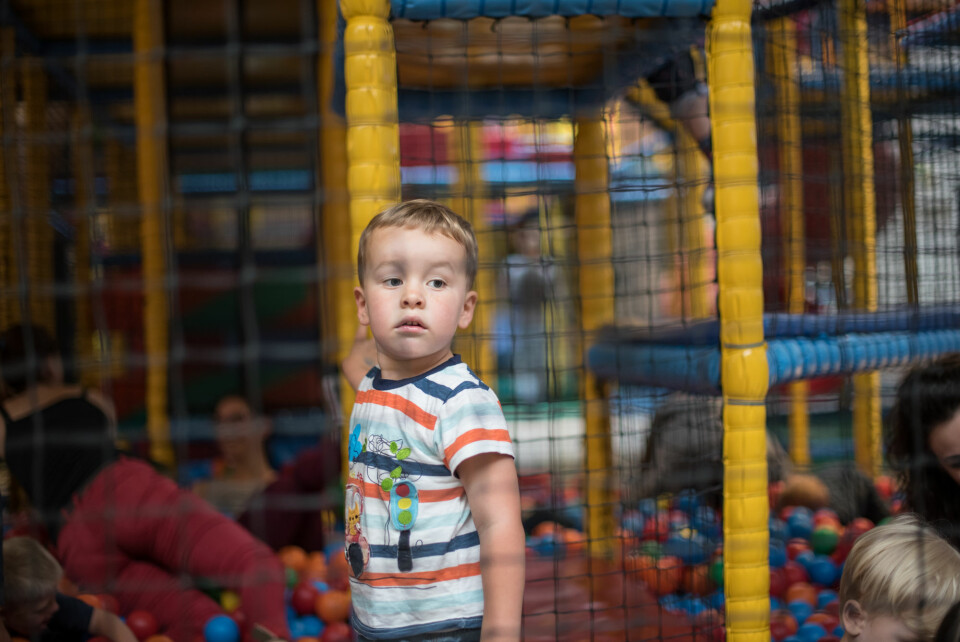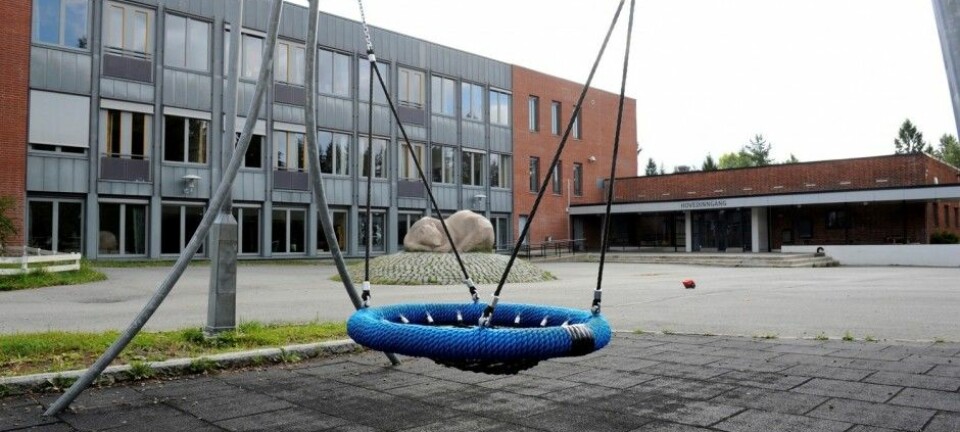
Keep an eye on your kids at indoor play centres, advises fire researcher
A new report raises fire safety concerns at indoor activity centres in Norway.
Researchers at RISE Fire Research in Trondheim conducted a study in which they evaluated fire safety in play and activity centres like indoor playgrounds, trampoline parks and gymnastics halls.
The researchers concluded that these spaces are not well equipped to effectively deal with fire risks.
Keep an eye on your child
Research leader Christian Sesseng admits that he was surprised by what they found.
He wouldn’t go so far as to call the buildings direct fire risks. Nor does he want to discourage people from taking their kids to activity centres.
“What we can say from this report is that these businesses haven’t adequately addressed fire safety issues. So I would recommend that parents keep an eye on their kids when they’re at places like this,” Sesseng says.
The researchers have gone through fire safety plans at nine different activity centres.
A fire safety document describes all the fire engineering issues of a building. The researchers also studied monitoring reports from the fire service.

Children may be distracted or hide when alarm goes off
The biggest challenges are that the people who visit play and activity centres are a different group than those who usually visit public buildings, says Sesseng.
“The majority of play centre visitors are children. Often, hundreds of children are gathered under the same roof. They often play on their own while mom and dad sit in the café,” he says.
Researchers know that children behave differently than adults do if a fire alarm goes off or a fire occurs.
“Kids often act irrationally. They may not respond when the fire alarm goes off, and keep on playing. The ones who start evacuating quickly might get distracted on the way out,” the fire researcher says.
Studies have also shown that some children get scared when the fire alarm goes off, so they go and hide.
Almost ten minutes to evacuate
Fire safety plans that have been developed for play and activity centres are unrealistically optimistic about how long it will take to evacuate the building, according to the researchers.
One fire safety plan stated that evacuation in the event of a fire would take three minutes. The researchers don’t think this length of time would apply when a lot of children are involved.
“Fire drills at kindergartens and schools show that it can take up to ten minutes for children of different age groups just to prepare to evacuate, and then the actual evacuation happens,” Sesseng says.
Parents start searching
If a fire starts in an activity centre, parents will also want to be in the building.
The strong social bond between parents and children needs to be taken into account in the fire safety plan, says Sesseng.
“Parents will refuse to evacuate until they’ve found their child,” he says. He believes this can easily lead to a state of chaos and panic.
If adults are trying to enter the play structures to find their child, it could hinder the escape of children who are on their way out.
A lot of plastic materials
Another major challenge is that these activity centres contain a lot of potentially flammable materials. Often the furnishings consist of different types of plastic materials.
We don’t know that much about these materials, says Sesseng.
“Little documentation exists on how quickly the materials ignite and fire can spread in them. We also don't know anything about how toxic the smoke from such a fire is. Plastic can burn in different ways, but a lot of plastic materials burn very easily and quickly,” he says.
Business owners need more expertise
The researchers' impression is that a comprehensive mindset about fire in Norwegian play and activity centres is simply lacking.
Comparing the situation to Sweden, they note that Swedish play and activity centres undergo several risk analyses, simulations and calculations that take into account the unique conditions in these facilities.
Norwegian businesses far less consistently had risk analyses done that were substantiated by authoritative documentation, says Sesseng.
The researchers believe that business owners need to obtain greater fire safety expertise.
Owners need to have fire advisers and experts in the field do more thorough analyses and advise them on how to meet fire safety requirements. Some of the fire advisers haven’t provided thorough enough analyses in the past, says Sesseng.
DSB will follow up
The Norwegian Directorate for Civil Protection (DSB) has posted on their websites that they will now ask the fire and rescue services to survey the activity centres in their municipalities and assess the need for supervision or other measures. DSB will also carry out supervision of selected activity centres itself.
“Indoor activity centres are a safe and fun activity, as long as everything is done by the book. However, after reading the report, it appears that fire safety isn’t being adequately addressed during the planning and operation phases. This is worrisome, especially considering that the users of these centres are children who are unable to assess the risk or behave predictably in an evacuation. The consequences of a fire could be deadly if the rules aren’t followed,” Per K. Brekke, the acting director of DSB, said in a press release.
He believes parents should ask questions and insist on safety measures for activity centres.
“Parents would then be helping businesses focus on safety,” says Brekke.
Centres anonymized
The researchers at RISE have anonymized the sites and activity centres they investigated for the report.
“We don’t know if they’re better or worse than others. We didn’t want to target them, but rather point to what we think might be a systemic oversight,” says Sesseng.
Reference:
K. Storesund et.al.: Brannsikkerhet i lek- og aktivitetssenter [Fire safety in play and activity centres], RISE report 2020: 1. English abstract.
———
Read the Norwegian version of this article at forskning.no
































